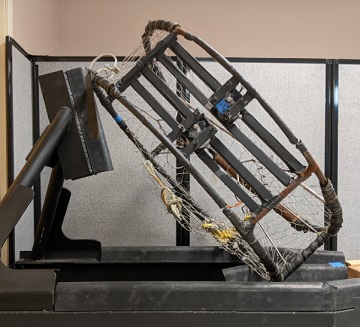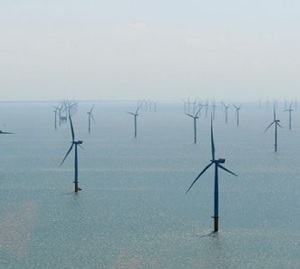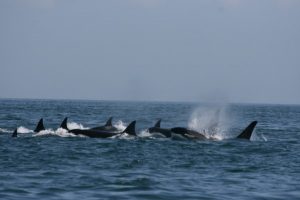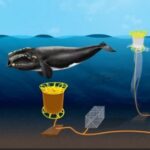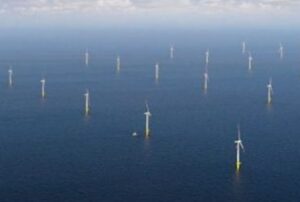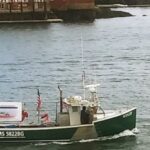Category Archives: Pacific
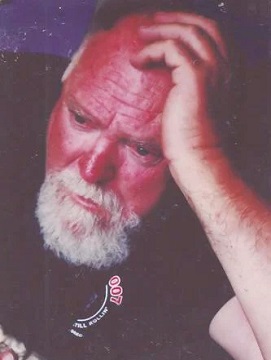
Army Vet/Commercial Fisherman Dale F Baines “Whaler” of Brookings, Oregon, has passed away
Dale was born on May 18, 1952, in Sacramento, CA to Vern and Marie (Barclay) Baines. At the age of 13 his mother and stepfather Leland Holmes moved the family to Gold Beach. Dale attended and graduated from Gold Beach High School in 1971. Soon after graduation he was drafted into the Army. Dale loved to fish from a young age. It was not surprising he became a commercial fisherman and in 1976 he bought his first F/V the TAKU a small salmon trawler which he fell overboard while fishing by himself off Eureka CA. Thankfully the Lord was not ready for him and saved him so that he could marry Mindy Payne on September 26, 1987. Dale spent many years working on others boats, until 2003 when he and his wife purchased the F/V Innisfree. >click to read< 13:04

USDA will invest $52 million to help fishing industry on the West Coast
The struggling fisheries industry on the West Coast is getting a much-needed financial boost from the federal government. The U.S. Department of Agriculture announced it will buy $52 million worth of Pacific groundfish for its food assistance programs. The money is the USDA’s third and biggest investment in the fish in as many years. In 2021, the USDA purchased $16 million of groundfish, specifically rockfish, pink shrimp and whiting or hake, a fish that’s popular in Eastern Europe. It increased that to up to just over $30 million the following year. This year’s $52 million surpasses the $50 million in wholesale sales for those fish last year, according to the Oregon Department of Fish and Wildlife, which tracks fisheries in Oregon. >click to read< 09:50

Blessing of the Fleet honors those in local fishing industry
The annual Blessing of the Fleet and Memorial Service will be held at the Charleston Fisherman’s Memorial Garden on Memorial Day. The service honors the local men and women involved in commercial fishing and the fishing industry who have lost their lives since 1941. This year they will be honoring fishermen Stan Main and Chauncey Woodworth, and fishing industry professionals Kevin Roy Cameron and Fernando Sandez. The 1954 Buoy Bell will be rung as each name is read, which is significant because fishermen rely on this sound to aid in safe navigation. The Fisherman’s Memorial Committee members said everyone in the community is invited to participate in the event. “It’s a matter of showing appreciation to the fisherman and to honor them, and it’s a nice event that shows patriotism,” Whitmer said. photos, >click to read< 11:26
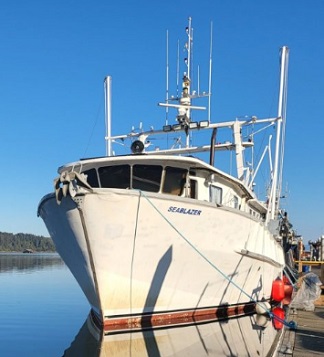
Starlink helps locate sunken treasure in Washington waters worth millions
Nearly 150 years ago, the SS Pacific and the S/V Orpheus collided off the coast of Cape Flattery in Washington state. While the Orpheus was able to ready lifeboats and make necessary repairs, the SS Pacific was not so fortunate, sinking into the late-night waters killing all but two of its estimated, 325 passengers. To this day, the incident remains one of the deadliest maritime disasters in Pacific Northwest history. Jeff Hummel and Matt McCauley first met while attending a high school in Mercer Island in 1979. In conversation, Hummel brought up a sunken airplane he knew about, which his father witnessed crash in Lake Washington while working at the Boeing plant in Renton. Photos, >click to read< 09:32
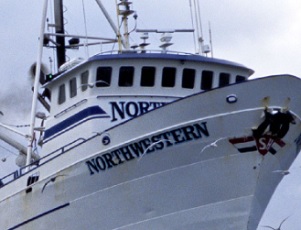
Why A Deadliest Catch Deckhand Is Suing Sig Hansen’s Company
A deckhand working on the fishing vessel Northwestern, which frequently appears on the Discovery hit “Deadliest Catch,” has filed a personal injury lawsuit against the ship’s owners. Alaska Public Media reports that deckhand Nick Mavar Jr. filed a civil suit against Hansen Enterprises, Inc. in December 2022 in Washington State’s King County Superior Court. In the brief, as quoted by Alaska Public Media, Mavar Jr. explains that during a December 2020 voyage with the show’s crew aboard the boat, Mavar Jr. began to experience worsening abdominal pain while working. He claims that he was not given adequate medical treatment in time, resulting in his appendix bursting before he was airlifted to a local hospital for treatment. It was later discovered that there was a cancerous tumor within the ruptured organ. Hansen Enterprise’s legal issues don’t end there. In the wake of Nick Mavar Jr.’s suit, Hansen Enterprises Inc. filed a civil lawsuit against Original Productions Inc and Trifecta Solutions LLC >click to read< 19:40
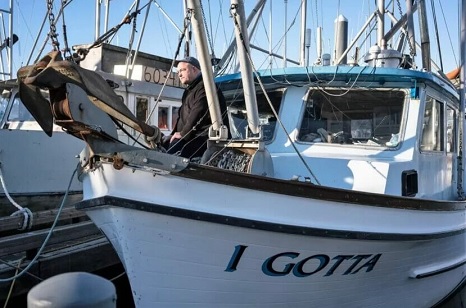
3 Alaska trollers contemplate a summer without chinook
Barring a stay, or a successful appeal, or other eleventh-hour legal action, there will be no troll fishery for king salmon in Southeast Alaska either this summer or winter. The fisheries have been canceled by order of the U.S. District Court of Western Washington on largely procedural grounds. According to the ruling they stem from a violation of the Endangered Species Act, and the failure of the National Marine Fisheries Service to fully address the impact of Alaska’s king salmon trollers on an endangered population of orcas in Puget Sound called Southern Resident killer whales. No other salmon species or commercial gear group or sport fishery anywhere on the entire Pacific Northwest coast is affected by the order, just commercial trolling for king salmon in Southeast Alaska. photos, >click to read/listen< 13:39
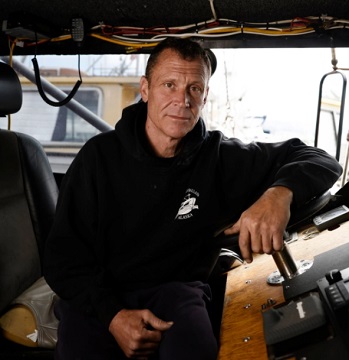
Dungeness crab fisherman from Half Moon Bay claims hefty fine ‘the most unfair thing’
Half Moon Bay commercial fisherman Paul Toste this week agreed to pay $17,000 in fines after state game wardens caught him fishing illegally for crabs in a marine preserve. But Toste, 52, claims he was unjustly persecuted and punished for a simple navigation mistake. “This was the most unfair thing I’ve ever seen in my life,” Toste said. “The original fine was $610,000 — for 15 crab pots. They tortured me for nine months of negotiating. It was one of the most horrible things I went through.” When he moved to the area 16 years ago, fishing was legal in what is now the reserve, he said. “They took that away from us,” he said. “We never were compensated for it, and then … I’m receiving a ticket for $610,000.” >click to read< 14:35
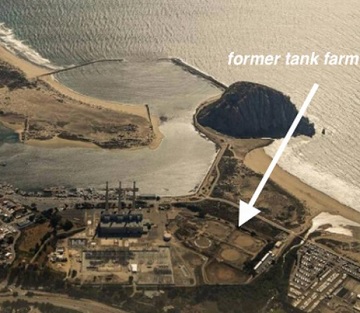
Morro Bay group plans initiative to block proposed battery storage plant
A group of Morro Bay residents who call themselves Citizens for Estero Bay Preservation has submitted a citizen’s initiative that aims to block construction of a battery storage facility near the old power plant. The 24-acre site for the proposed battery plant is adjacent to a major PG&E substation, where it would connect to the California grid via high-voltage power lines that climb the hills from Morro Bay across SLO County to the California transmission system. Some critics, however, don’t want to see these systems in their backyard. They point to the need to preserve Morro Bay’s fishing village atmosphere. There is another aspect to all this. Many of the same critics don’t want the offshore wind project either and lump their concerns together. >click to read< 08:52
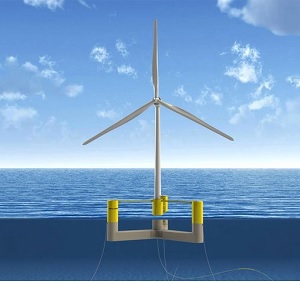
Old lumber port preps for new life as California offshore wind hub
Eureka’s halcyon days as the “timber capital” of California are long gone, but the deepwater port city 270 miles north of San Francisco may see its fortunes turn as the hub of the state’s first foray in offshore wind energy. Eureka sits across two of the five swaths of Pacific Ocean along the California coast that the federal government auctioned off to offshore wind developers this past December for a total of $757 million. The three other leases are on the Central Coast across from Morro Bay. Humboldt Bay, the second-largest bay in California after the San Francisco Bay, is ideally suited to become the final assembly port for the massive turbines. >click to read< 15:43

Alaska trollers will feel pain and unnecessary hardship from ruling on orca lawsuit
As president of Seafood Producers Cooperative, representing nearly 400 fishermen-owners, who reside in California, Oregon, Washington and Alaska, I want to convey our great disappointment and frustration with the recent ruling concerning the Wild Fish Conservancy and their lawsuit directed at our Salmon Troll fleet. The WFC found a technicality in National Oceanic and Atmospheric Administration’s biological opinion for troll-caught king salmon. No other fishing gear groups are being attacked and other commercial and sports fishermen in the region – and in the Puget Sound – will continue to harvest king salmon. >click to read< 08:59
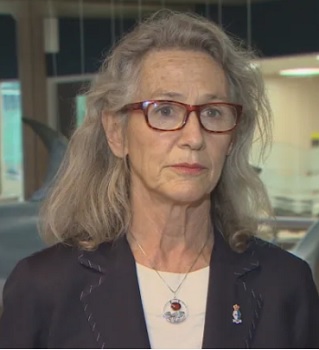
Alaskans poaching Canadian salmon top concern for federal fisheries minister
American fishing boats catching threatened Canadian salmon was flagged as a top concern for federal Fisheries Minister Joyce Murray before meeting with the U.S. ambassador to Canada in March. Over the past decade, and especially in 2021 — commercial fisheries in southeast Alaska have intercepted high numbers of Canadian salmon, particularly threatened sockeye stocks from the Nass, Skeena and Fraser rivers in B.C., the document said. The long-term rebuilding of threatened Pacific salmon stocks is a key objective for Canada, which is concerned about the potential impact a number of Alaskan fisheries are having on those stocks, the document said. >click to read< 10:47
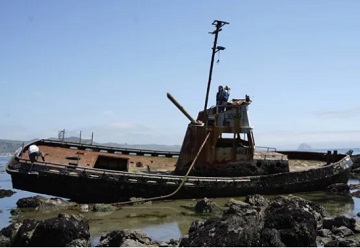
Shipwrecked ‘ghost boat’ looms on SLO County coast. Where did it come from?
Rumors circulate about how the so-called “ghost boat” came to rest off the coast of Estero Bluffs, with some claiming that its owner fell asleep at the helm while returning home from a fishing trip. According to a U.S. Coast Guard incident report, boat owner Jonathan Smith was fishing on July 28, 2017, when his boat drifted too close to the Estero Bay shore. Smith’s deckhand wasn’t feeling well and “went below deck to rest” — leaving Smith to fend for himself, the incident report said. At about 3:45 a.m., the boat’s propeller caught on a crab pot line, so Smith stopped the engine to try to untangle the line, the report said. photos, >click to read< 08:15

’Deadliest Catch’: Sig Hansen Admits Producers Make the Show More ‘Dramatic’: ‘That’s What Sells’
Discovery Channel’s hit reality TV series, Deadliest Catch, focuses heavily on Sig Hansen in season 19. Sig and his daughter, Mandy Hansen, are at the helm of the Northwestern, and they’ve given a lot of insight into what life is like catching crabs on the Bering Sea. Here’s what Sig Hansen admitted about the producers of Deadliest Catch focusing on the difficult weather conditions to make the show more “dramatic.” “They shoot thousands of hours of footage, and I can understand that they are trying to put a storyboard together and make it fit. Everything that they film is accurate, but you will see a lot of the more foul weather as opposed to the calm days. I suppose that’s what sells, but the bad weather is a reality.” Also, an interesting video of the F/V Foremost sinking, leading to the construction of F/V Northwestern. >click to read< 13:41
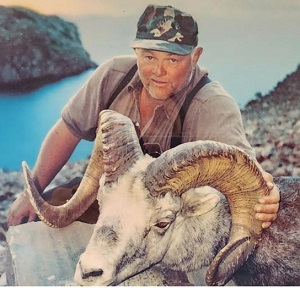
Commercial Fisherman Lloyd D. Whaley of Brookings, Oregon has passed away
Lloyd D. Whaley was born April 30th, 1943, and passed away peacefully on Saturday morning April 29th, 2023. He juggled working nights at the lumber mill while pursuing his eventual career during the daytime: commercial fishing. The long hours and lack of sleep eventually paid off when he was able to buy his first salmon trawler, the Marilyn A. Some years later, he sold the Marilyn A and bought a slightly larger trawler, the Kristy. Unfortunately, the risk of fishing caught up with him and the Kristy sank. Instead of becoming discouraged, he remained devoted to commercial fishing and built a boat that could handle harsher weather conditions and diversify into other fisheries such as crab, shrimp, and bottom trawl, the Cape Sebastian. From there he grew to a second vessel, a 90-foot gulf shrimper the BJ Thomas (later sold to his granddaughter Sarah and husband Justin). Finally, in 1987 in a partnership with his son, they built a combination trawler crabber in Alabama and named it the Miss Sarah after his granddaughter. Additionally, Lloyd gave 20 years of service to the Port of Brookings Harbor as a commissioner. >click to read< 11:54
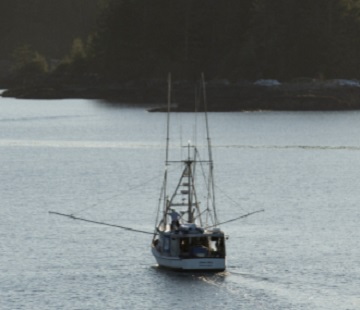
Seattle judge’s ruling might cancel Alaska commercial king salmon season
A ruling from a U.S. judge in Seattle could effectively shut down commercial king salmon trolling in Southeast Alaska, a valuable industry that supports some 1,500 fishermen, after a conservation group challenged the harvest as a threat to endangered killer whales that eat the fish. Wild Fish Conservancy, the organization that brought the lawsuit, heralded the decision as the most significant government action in decades to provide more food for starving orcas. But fishing organizations condemned the ruling, saying it threatens the region with economic disaster and would do little or nothing to benefit orcas. The state of Alaska quickly announced an appeal. >click to read< 10:12
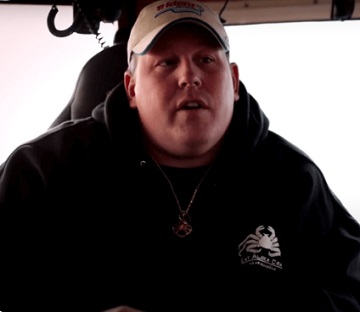
Deadliest Catch: Where is Captain Casey McManus anyway?!!
High-stakes reality series “Deadliest Catch” is back on Discovery Channel for its 19th season. But a few familiar faces are missing from the popular show. Former cast member Josh Harris does not appear in the new episodes. Nor does his one-time partner Captain Casey McManus of the F/V Cornelia Marie. Instead, McManus has taken a job that keeps him a bit closer to shore. While Discovery Channel had cut ties with Harris, McManus’ future on the show was unclear. However, when details about the currently airing 19th season were released, his name was missing from the list of captains. Video, >click to read< 17:49
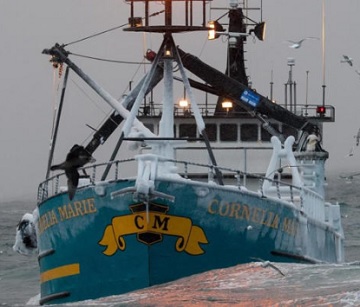
The Cornelia Marie Fishing Vessel Was a Big Part of ‘Deadliest Catch’ for Years. Where is She Now?!
On a show like Deadliest Catch, the fishing boats are as important as the main cast members and crew. Since the Cornelia Marie was with the series since nearly the beginning, but no longer appears to be part of the Discovery series, fans are curious. Where is the Cornelia Marie? And, perhaps more importantly, what happened to it? The Cornelia Marie fishing boat was introduced in Season 2 of Deadliest Catch. From there, viewers met the boat’s crew and got to know Captain Phil Harris. He later passed away in Season 6. The Cornelia Marie continued to be part of the series, however, and different captains took control of the vessel. That’s no longer the case. >click to read< 19:40
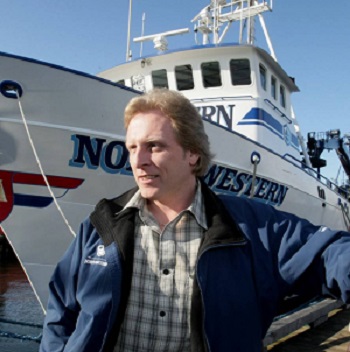
‘Deadliest Catch’ boat owner sues production company over former deckhand’s medical care
The owners of a fishing vessel featured in “Deadliest Catch” are suing the reality TV show’s production company and a contractor after a former crew member blamed a lack of prompt care during the pandemic for leaving him with serious medical problems. The civil lawsuit, filed Friday in U.S. District Court in Alaska by attorneys for the F/V Northwestern, centers on 58-year-old former deckhand Nick Mavar Jr., a longtime cast member of the show that debuted in 2005 on the Discovery Channel. The suit references a separate complaint Mavar filed in December in Washington’s King County Superior Court seeking more than $1 million in damages from the Northwestern’s owners, listed by Washington state records as Sig Hansen, the boat’s captain, and his wife, June. F/V Northwestern LLC is licensed in Alaska. >click to read<, and, ‘Deadliest Catch’ Lawsuit: Why Nick Mavar Jr. Sued Sig Hansen Over Medical Care >click to read< 12:02
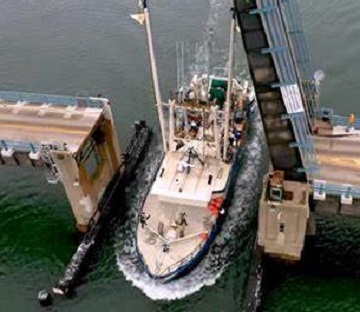
Cause of Action Institute: Supreme Court to Hear Fishermen’s Chevron Challenge
The justices will review Loper Bright v. Raimondo. The fishermen, represented by former Solicitor General Paul Clement and lawyers from Cause of Action Institute, petitioned the Court in November to overrule a funding scheme that would force them to hand over 20 percent of their pay to third-party at-sea monitors they must bring on their boats—a mandate that Congress never approved by statute. Amicus briefs in support of the fishermen’s case were filed by 38 organizations and individuals, including one signed by 18 state attorneys general. “The Supreme Court has an opportunity to correct one of the most consequential judicial errors in a generation. Video, lots of noteworthy links with lots of info. >click to read< 19:00
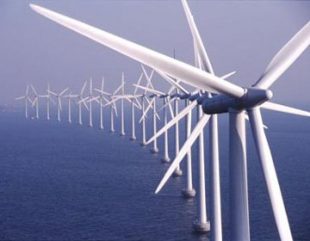
Wind-power auction at Morro Bay shows how money matters in climate projects
This head-scratching story is centered on Morro Bay. When offshore wind development became a public issue there nearly a decade ago, citizens expressed concerns about the impacts of turbines on birds, fisheries, or, even at a distance of 20 miles from land, the natural beauty of the coast. But in 2015, Castle Wind LLC — a joint venture between Washington state-based Trident Winds and the subsidiary of a Germany utility — started a dialogue with residents and stakeholders. Castle Wind, following local leaders’ advice, talked first with fishermen, whose struggles are well-known. After two-plus years of discussions, Castle Wind and two fishermen’s associations forged a novel mutual benefits agreement. >click to read< 10:34

Celebrate Whale Week with NOAA Fisheries: A message from Janet Coit, Assistant Administrator
At NOAA Fisheries, our team of dedicated scientists and managers is responsible for the health and sustainability of more than 30 whale species in U.S and territorial waters. Every year, we spend a week taking a deeper dive to share our whale expertise. This year is particularly notable because it is the 50th anniversary of the Endangered Species Act. Some of the most recognizable whales—North Atlantic right whales, Southern Resident killer whales, and Cook Inlet belugas—are at the top of our Species in the Spotlight initiative. >click to read< 18:33
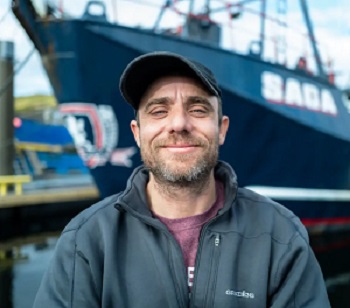
‘Deadliest Catch’ Captains Earn Good Money From the Show, Says Jake Anderson
With great risk comes great reward. That certainly can be the case when it comes to commercial fishing. Captains featured on Discovery Channel’s long-running show Deadliest Catch can earn six figures in a single season, depending on their haul. And that’s not counting what they make for appearing on the reality series, which can be substantial, cast member and captain Jake Anderson has said. Anderson has spent more than 15 years as a Deadliest Catchcast member, rising from greenhorn to captain of his own boat, the F/V Saga. Now a seasoned veteran of the Alaskan fishing industry, he’s said he can make millions of dollars in just a few weeks, if everything goes well. 2 Video’s, >click to read< 22:07
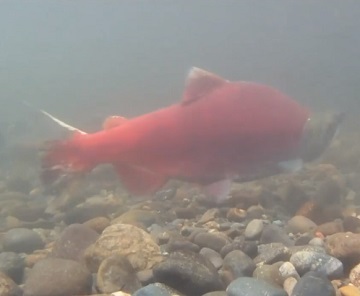
Fish from Washington’s coastal commercial troll Chinook fishery are a more sustainable way to eat salmon
Washington Fish and Wildlife (WDFW) says the coastal commercial troll Chinook fishery will begin May 1, and encourages customers to keep an eye out for locally caught salmon. It says the fishery is unique for both its economic and environmental impacts. “A lot of the people who hold troller permits are families that have been doing this for generations in Washington state,” WDFW Marine Salmon Fisheries Policy Coordinator Dr. Alexandrea Safiq said. Fisherman Geoff Lebon says trollers catch different stocks throughout the summer and pace their fishing to fit the market, keeping costs lower for customers. Video, >click to read< 09:47
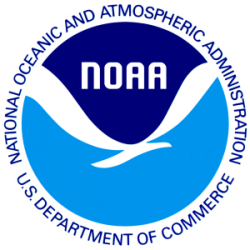
NOAA Fisheries Releases 2022 Status of Stocks
The National Oceanic and Atmospheric Administration’s (NOAA) National Marine Fisheries Service (NMFS) is pleased to present the 2022 Report to Congress on the Status of U.S. Fisheries. This report highlights the achievements of NMFS, the eight Regional Fishery Management Councils (Councils), and our other partners. In 2022, the number of stocks on the overfishing list decreased slightly, the number of overfished stocks also slightly decreased, and two stocks were rebuilt. We continue to implement management measures that will end overfishing, rebuild overfished stocks, and sustain our fisheries for future generations. Sound science, an increasing focus on climate-informed management, effective enforcement, meaningful partnerships, and public engagement drive our success in managing the most sustainable fisheries in the world. >click to read< 11:58
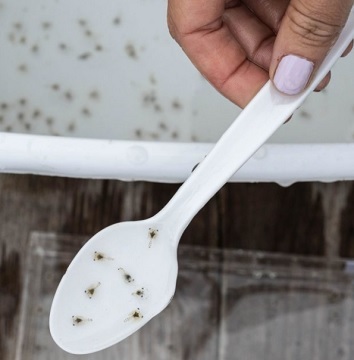
Shining the Light on Baby Crabs
The light trap at Whaler Bay is one in a network of 20 traps placed throughout the Canadian side of the Salish Sea, from Read Island in the north to James Island near Sidney in the south, as part of the Hakai Institute’s multiyear Sentinels of Change program. Launched in 2022 to mark the United Nations Decade of Ocean Science for Sustainable Development, this community-centered initiative involves understanding how marine invertebrates are adapting to the changing environment. The light trap project, which focuses on the native Dungeness crab—a much-loved treat on the coast that can grow to the size of an adult’s outstretched hand—is a part of this program. Photos, >click to read< 10:17
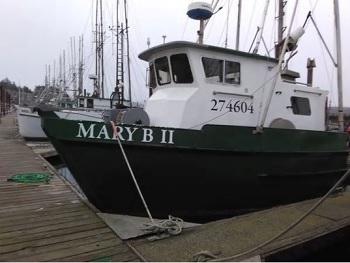
F/V Mary B II: Coast Guard owes the public answers
It has been more than four years since the deadly capsizing of the crabbing vessel FV Mary B II while it attempted to cross the Yaquina River bar inbound in stormy weather, killing the skipper and two crew members as Coast Guard vessels were nearby. The captain had previously operated off New Jersey and wasn’t familiar with Pacific Coast conditions. At the time of the hearings, the lead Coast Guard officer said a report was expected before May 2020. However, almost four years have now elapsed since the hearing and the Coast Guard has not released its final investigation report publicly. >click to read< 11:42

CDFW INVESTS $17.5 MILLION IN THE KLAMATH BASIN
The California Department of Fish and Wildlife recently provided $17.5 million for the collaborative planning and implementation of three emergency projects that aim to restore critical salmon habitat, improve water management and make the Klamath Basin more resilient to climate change. “I would like to thank California Governor Gavin Newsom and Department of Fish and Wildlife Director Charlton Bonham for supporting our efforts to rebuild salmon runs on the Klamath River and its tributaries,” said Yurok Vice Chairman Frankie Myers. “I also want to acknowledge the diverse group of stakeholders working on these projects. Together, we are carving out a new path toward restoration in the Klamath Basin.” >click to read< 09:25







